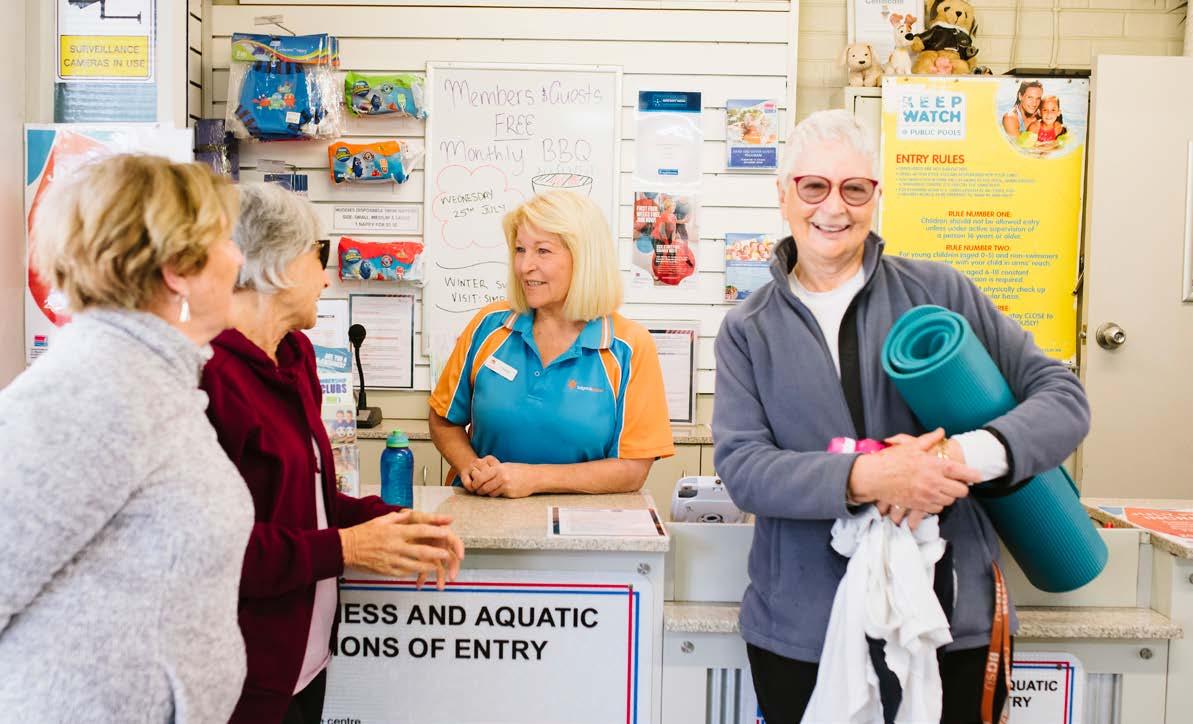
2 minute read
Conclusion
4
Conclusion
The aquatic industry is important for Australia, facilitating over $9 billion in quantifiable benefits for Australians, the communities they live in as well as society as a whole. The economic benefit is primarily driven by activity occurring at aquatic facilities, which provide comparatively safe locations for community members to spend their leisure time, get active and improve their wellbeing. These facilities also provide increased job opportunities for youths and in regional Australia, as well as increased social cohesion. This report has captured a holistic view of benefits across the industry and can be used to support and inform policy makers when making decisions on future infrastructure. With a strong SROI on aquatic facilities, we recommend policy makers give strong consideration to the maintenance and development of new and existing aquatic facilities, particularly when looking to improve health, social and economic outcomes for the whole-of-community.
Additionally, in order to understand the benefits of the aquatic industry at a more granular level, for individuals and communities, additional analysis that could enhance the findings of this report include:
• Focused analysis of the benefit of remote
and rural Australian pools: Analysis in this report has relied on high level data for capital cities and regional Australia.
Further targeted analysis could determine the additional social benefits of the aquatic facilities in remote and rural locations.
• Needs analysis of aquatic facility
infrastructure: This report does not include analysis on current state of aquatic infrastructure. Future analysis on age, utilisation, operating cost and location could be used to determine the locations that may be suitable for redevelopment or a new aquatic facility.
Combined with analysis in this report, this could inform decision makers on the costs and benefits of redeveloping or replacing existing infrastructure.
• Gap analysis of aquatic infrastructure:
Geospatial analysis of current infrastructure and population demographics could be used to determine areas that are under-serviced by the current aquatic infrastructure.
Using analysis in this report combined with targeted regional modelling could inform decision makers on the costs and benefits of building new infrastructure.
• Expanded willingness to pay survey:
Increased granularity of communities’ willingness to pay for activities in the aquatic industry could help policy makers to make informed decisions about future investment. Undertaking further study in various locations, including capital cities, and regional and remote communities could determine the benefits provided by aquatic facilities with increased granularity.
• Facility-level SROI assessment tool:
Quantitative benefits provide valuable evidence when informing decisions for funding. However, for most local aquatic facilities, quantitative benefit assessments are too expensive. RLSSA can reduce this cost to operators, and improve advocacy across the industry.
• Focussed assessment of industry
sections: Increased granularity of assessment on sections of the industry such as private learn-to-swim and council-owned pools can provide critical insight into sections of the industry.



